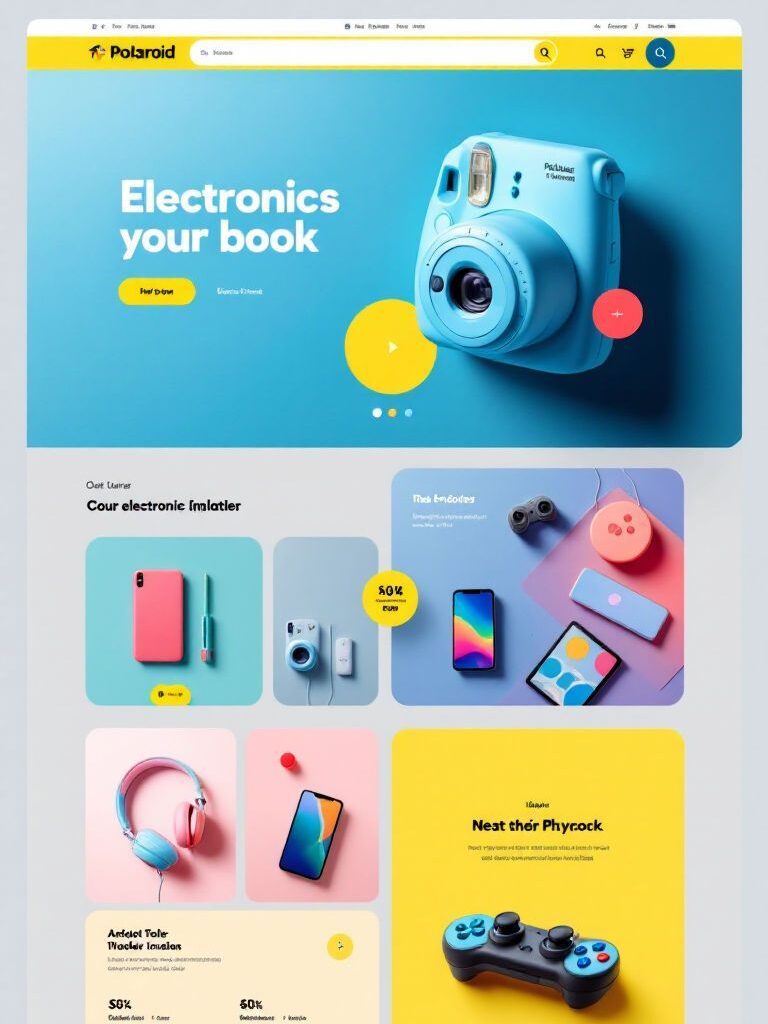Growing an online store takes more than just having products available for purchase. You need a clear approach that helps you attract the right audience, keep them engaged, and turn visits into sales. E-commerce growth strategies give you the tools to scale effectively by improving how you sell, market, and retain customers.
You can strengthen your store by focusing on the experience you provide, from smooth navigation to personalized recommendations. When you combine smart marketing with data-driven insights, you gain a better chance of reaching new customers while keeping existing ones loyal. Small changes in how you present products, manage checkout, or follow up after a purchase can create lasting impact.
Technology also plays a major role. Automation, artificial intelligence, and social proof can simplify operations and build trust at the same time. By using the right mix of strategies, you position your store to grow steadily and adapt to changing demands.
Key Takeaways
- Strong growth strategies create a clear path for scaling an online store
- Optimizing the shopping experience drives higher conversions and loyalty
- Smart use of technology and trust-building tactics supports long-term success


Core Principles of E-Commerce Growth Strategies
Sustainable growth in e-commerce depends on how well you measure performance, define clear objectives, and communicate what makes your business stand out. Focusing on the right data, setting realistic targets, and clarifying your value proposition helps you allocate resources effectively and improve profitability.
Understanding Growth Metrics
You can’t manage what you don’t measure. Tracking the right growth metrics gives you a clear picture of how your store performs and where improvements are needed.
Key metrics include:
- Conversion rate (CR): Percentage of visitors who complete a purchase.
- Customer acquisition cost (CAC): Average cost to acquire a new customer.
- Customer lifetime value (CLV): Total revenue you can expect from a customer over time.
- Average order value (AOV): Average amount spent per transaction.
- Cart abandonment rate: Percentage of shoppers who leave without completing checkout.
Comparing CLV to CAC helps you understand if your acquisition strategy is profitable. For example, if CLV is three times higher than CAC, your approach is sustainable.
Regularly reviewing these numbers allows you to adjust marketing spend, optimize campaigns, and improve ROI. Instead of tracking every possible metric, focus on the ones most tied to revenue growth and customer retention.
Setting Actionable Goals
Once you know your numbers, you need to turn insights into actionable goals. Clear targets help you prioritize initiatives and measure progress.
Good goals follow the SMART framework:
- Specific: Increase AOV by 10%.
- Measurable: Track through your analytics dashboard.
- Achievable: Based on current sales trends.
- Relevant: Tied to revenue growth.
- Time-bound: Within the next quarter.
You might set goals like reducing cart abandonment by improving checkout speed, or lowering CAC by refining ad targeting. Each goal should connect directly to a measurable outcome that impacts your bottom line.
Avoid setting too many goals at once. Focus on a few that will deliver the highest impact and revisit them regularly to adjust strategies as needed.
Identifying Your Unique Value Proposition
Your unique value proposition (UVP) explains why customers should buy from you instead of competitors. It should be specific, customer-focused, and easy to understand.
Think about what differentiates your store:
- Product quality or exclusivity
- Pricing strategy (premium or affordable)
- Customer experience (fast shipping, easy returns)
- Personalization (recommendations, loyalty rewards)
You should also consider how your UVP aligns with customer expectations. For instance, if you target price-sensitive shoppers, emphasizing free shipping or discounts may be more effective than highlighting premium features, especially when using cost-efficient fulfillment partners like Ship with Mina to support those savings.
Clearly communicating your UVP across product pages, ads, and email campaigns strengthens trust and increases conversion rates. A well-defined UVP not only attracts new customers but also improves retention, raising both CLV and overall ROI.


Optimizing the Online Store Experience
Shoppers expect a smooth digital journey where design, speed, and convenience work together. The way you structure your store, support mobile users, and deliver tailored recommendations can directly influence how often visitors complete a purchase.
Website Design and User Experience
A clean, intuitive design helps customers focus on products instead of distractions. Your navigation should be simple, with categories clearly labeled and search functionality easy to find. Fast-loading pages reduce bounce rates and keep shoppers engaged.
Clear product descriptions, high-quality images, and zoom features build trust. Adding customer reviews and ratings gives social proof that influences buying decisions.
Consider using comparison tables or quick-view options so visitors can evaluate products without leaving the page. On platforms like Shopify, you can use built-in themes and apps to refine layouts without heavy coding.
Accessibility also matters. Ensure fonts are legible, buttons are large enough to tap, and color contrast supports all users. A well-structured design lowers friction and increases the chance of repeat visits.
Mobile Optimization and Payment Options
Most online shopping now happens on smartphones, so mobile optimization is no longer optional. A responsive design ensures your store looks and functions well on smaller screens. Test how your checkout process performs on both iOS and Android devices.
Streamline checkout by offering multiple payment methods. Options like Apple Pay, Google Pay, and PayPal reduce friction since customers can pay with saved credentials. Fewer form fields mean fewer abandoned carts.
Use autofill for shipping details and provide real-time shipping cost estimates. Add progress indicators during checkout so customers know how many steps remain.
Mobile-friendly product pages should include swipeable image galleries and clear call-to-action buttons. By removing unnecessary clicks, you make the buying process faster and more convenient for mobile shoppers.
Personalization and Product Recommendations
Personalization helps you show the right products to the right people. With AI-powered personalization, you can analyze browsing behavior and purchase history to surface relevant items. This saves customers time and increases the likelihood of conversion.
Personalized product recommendations can appear on product pages, in the cart, or through email campaigns. For example, suggesting complementary items like accessories encourages higher order values.
Emerging tools such as virtual try-ons and augmented reality previews let shoppers visualize products before buying. This reduces uncertainty and lowers return rates.
You can also explore voice commerce features, allowing customers to search or reorder products using smart speakers. By aligning recommendations with customer intent, you create a shopping experience that feels more tailored and convenient.


Customer Acquisition and Marketing Approaches
You can attract new shoppers more effectively by combining data-driven search strategies, integrated sales channels, and trusted voices that influence buying decisions. Each approach strengthens your ability to increase visibility, build credibility, and convert interest into sales.
Search Engine Optimization Strategies
Search engine optimization (SEO) helps you capture shoppers who are already searching for products like yours. By improving how your store appears in search results, you increase both traffic and qualified leads.
Start with keyword research to identify what your audience is typing into Google. Focus on product-related queries with buying intent rather than broad terms.
Use structured data (schema markup) so search engines can better understand your product pages. This can help your listings display rich snippets such as price, availability, and reviews.
A simple checklist for ecommerce SEO:
- Optimize product titles and descriptions with target keywords
- Improve site speed and mobile usability
- Use internal linking to guide visitors to related products
- Regularly update content to stay relevant
When you apply these steps, your store gains better visibility and attracts shoppers who are more likely to convert.
Omnichannel and Social Commerce
Omnichannel marketing ensures your customers have a consistent experience whether they shop on your website, a marketplace, or a social platform. You meet buyers where they already spend time and make it easy for them to complete purchases.
Platforms like Instagram, TikTok, and Facebook now offer social commerce options that allow direct checkout without leaving the app. This reduces friction and shortens the path to purchase.
You can also connect your ecommerce store with marketplaces such as Amazon or Etsy. This expands reach while keeping your brand present across multiple touchpoints.
A practical approach is to:
- Sync inventory across all channels
- Use consistent branding and messaging
- Track performance with unified analytics
By blending these channels, you reduce gaps in the customer journey and create more opportunities for sales.
Influencer and Content Marketing
Influencer marketing helps you build trust by leveraging people your audience already follows. When influencers share authentic experiences with your product, it works as social proof that encourages others to buy.
Micro-influencers often deliver stronger engagement than larger accounts. They usually create relatable content and have highly targeted audiences.
Pair influencer campaigns with user-generated content (UGC). Encourage customers to post reviews, photos, or unboxing videos. UGC adds credibility and can be repurposed across ads, product pages, and email campaigns.
Content marketing also plays a role. Blog posts, tutorials, and product guides improve SEO while educating shoppers. This combination of influencer reach and helpful content creates a steady flow of new customers.


Maximizing Conversion and Retention
Improving your store’s performance depends on turning more visitors into buyers and keeping existing customers engaged. You can achieve this by refining the shopping experience, addressing abandoned carts, building loyalty, and encouraging customers to spend more over time.
Conversion Rate Optimization Techniques
Conversion rate optimization (CRO) focuses on small but measurable improvements that guide shoppers through checkout. Start by simplifying your site’s navigation and ensuring your product pages load quickly on both desktop and mobile. Clear calls-to-action, high-quality product images, and transparent pricing reduce hesitation.
You can also test different layouts and messaging with A/B testing. For example, compare two versions of a checkout page to see which one leads to higher completions.
Consider adding trust signals such as customer reviews, security badges, and clear return policies. These elements build confidence and encourage purchases. Even minor changes, like reducing form fields or offering guest checkout, can lift conversions.
Abandoned Cart Recovery
Cart abandonment is a common challenge, but you can recover lost sales with the right strategies. Automated abandoned cart reminders sent by email or SMS often bring shoppers back. Timing matters—sending the first reminder within 24 hours works best.
Personalize these reminders by including product images, names, and even limited-time promotions. A small discount or free shipping offer can nudge customers to complete their order.
You can also use retargeting ads to reach users who left items behind. Pairing reminders with urgency, like “only a few left in stock,” helps reduce hesitation. Make sure the checkout process is smooth to prevent future abandonments.
Customer Retention and Loyalty Programs
Customer retention drives long-term growth because repeat buyers typically spend more than first-time shoppers. Loyalty programs encourage customers to return by rewarding purchases with points, discounts, or exclusive perks.
You can segment your audience to deliver personalized offers through newsletters, SMS, or app notifications. For instance, send birthday discounts or early access to new products. These touches make customers feel valued and increase their lifetime value.
Subscriptions are another effective retention tool. Offering recurring deliveries for products like supplements or household items adds convenience for customers while giving you predictable revenue. Retention efforts help reduce your reliance on constant new customer acquisition.
Upselling and Increasing Average Order Value
Upselling and cross-selling increase the average order value (AOV) without requiring more traffic. You can recommend higher-value products or complementary items directly on product pages or during checkout.
Bundles and volume discounts also encourage larger purchases. For example, “buy two, get one free” promotions motivate customers to spend more in a single transaction.
Highlighting popular add-ons or offering free shipping thresholds can further boost order sizes. If your free shipping starts at $50, many customers will add extra items to reach that amount. These strategies increase revenue while improving customer satisfaction.


Leveraging Automation and Advanced Technologies
You can use advanced technologies to improve decision-making, streamline operations, and create more personalized customer experiences. These tools help you reduce manual work, identify patterns in customer behavior, and allocate resources more effectively.
Artificial Intelligence and Machine Learning
Artificial intelligence and machine learning allow you to process large amounts of data and uncover insights that would be difficult to find manually. You can use AI to recommend products, adjust pricing in real time, and detect fraud before it impacts your business.
Machine learning models improve as they receive more data. This means your recommendations, forecasts, and personalization strategies become more accurate over time. For example, you can train models to predict which products a customer is most likely to buy next.
You can also apply AI to customer service. Chatbots powered by natural language processing handle common questions and reduce wait times. This frees your team to focus on more complex issues while still giving customers quick and accurate responses.
Predictive Analytics and Customer Segmentation
Predictive analytics helps you anticipate customer needs and market shifts. By analyzing past purchases, browsing behavior, and demographic data, you can forecast demand and adjust your inventory management before shortages or overstock occur.
Customer segmentation allows you to group buyers based on shared traits such as purchase frequency, location, or product preferences. This makes it easier to design targeted campaigns that speak directly to each group.
A simple way to apply segmentation is through tiered marketing:
- High-value customers: Offer loyalty rewards and exclusive promotions.
- Occasional buyers: Send reminders and incentives to encourage repeat purchases.
- New customers: Provide onboarding content and first-time discounts.
When combined with predictive analytics, segmentation ensures that your marketing feels relevant and timely rather than generic.
Automation in Marketing and Operations
Automation reduces repetitive tasks across both marketing and operations. In marketing, you can use automated email flows, ad retargeting, and personalized product recommendations to engage customers without constant manual input.
In operations, automation supports inventory management by syncing stock levels across channels and triggering reorders when supplies run low. This prevents lost sales due to stockouts and reduces the risk of overstocking.
Order fulfillment also benefits from automation. Systems can route orders to the nearest warehouse, print shipping labels, and update customers with tracking information automatically. These small efficiencies add up, allowing you to scale without increasing overhead.


Enhancing Customer Experience and Social Proof
Improving your store’s growth depends on how well you support customers, build trust, and keep them engaged. Clear communication, visible proof of credibility, and consistent outreach all work together to create a smoother customer journey.
Live Chat and Customer Service
Live chat gives your customers quick answers without forcing them to leave the page. This reduces friction in the buying process and helps you recover potential lost sales.
You can use 24/7 chatbots for common questions like shipping times or return policies. For more complex issues, offering a handoff to a live agent ensures customers still feel supported.
Benefits of live chat:
- Faster response times
- Reduced cart abandonment
- Higher satisfaction scores
Adding proactive chat prompts, such as a message when someone lingers on the checkout page, can also guide hesitant buyers. When customers feel supported in real time, they’re more likely to complete their purchase and return in the future.
Building Trust with Reviews and Social Proof
Shoppers often look for reassurance before making a purchase. Customer reviews, star ratings, and real-life photos provide that reassurance by showing what others experienced.
Displaying both positive and constructive reviews builds credibility. You can highlight recent reviews, verified purchase badges, and even user-generated content from social media to reinforce trust.
Types of social proof you can use:
- Customer reviews and ratings
- Testimonials from verified buyers
- Trust badges or seals
- Real-time activity notifications (e.g., “Someone just bought this item”)
By making these elements visible on product pages, you reduce uncertainty. Customers who see proof of others’ satisfaction are more confident in their decision, which leads to higher conversions and loyalty.
Driving Engagement with Email Marketing
Email marketing keeps your business connected to customers beyond the initial purchase. You can use it to share order updates, product recommendations, and personalized offers.
Segmenting your email list helps you deliver more relevant content. For example, send welcome emails to new customers, abandoned cart reminders to undecided shoppers, and loyalty rewards to repeat buyers.
A simple table of common email campaigns:
| Campaign Type | Purpose | Example Message |
|---|---|---|
| Welcome Email | Build first impression | “Thanks for joining us!” |
| Abandoned Cart | Recover lost sales | “Your items are waiting” |
| Loyalty Reward | Encourage repeat purchases | “Enjoy 10% off your next order” |
By tailoring your messages, you keep customers engaged at every stage of their journey. This not only drives sales but also strengthens long-term relationships.
- 76shares
- Facebook0
- Pinterest76
- Twitter0



